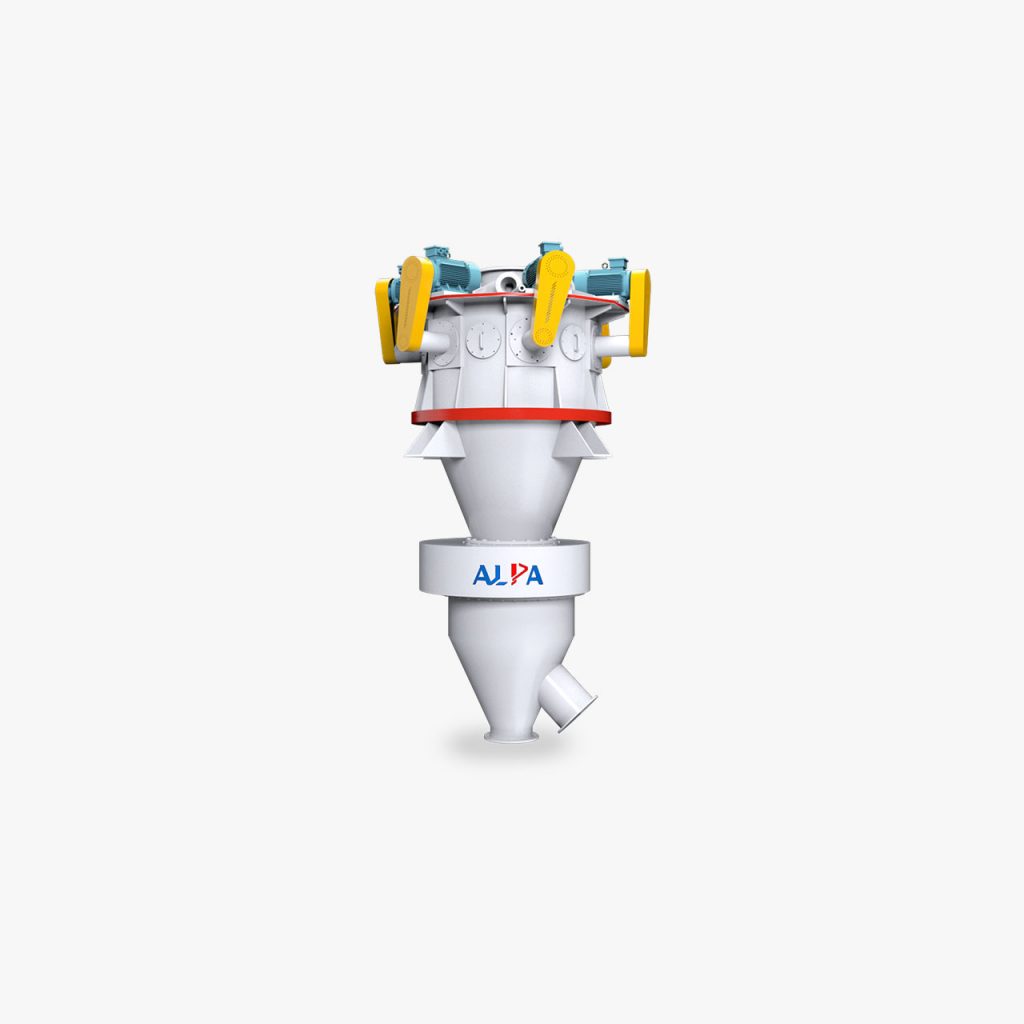What are the methods and common equipment for powder classification?

In terms of powder preparation, classification is of great significance, and it is one of the main deep processing technologies of powder in the field of inorganic non-metallic materials. Based on the particle size requirements of modern industry for fine powders, classification technology has shown more and more important status. It is not difficult to manufacture micron-sized powders, but how to reduce energy consumption and produce powders with very fine particle size and narrow particle size distribution is a challenge encountered in recent years.
The key of grading technology lies in grading equipment and grading process. In order to meet the high-precision classification, it is required to optimize the combination of various classifications. Therefore, it is particularly important to understand and master the main types and structural principles of grading equipment for the optimization of the grading process. In this field, it mainly involves fine particle classification, which is classified according to the nature of the medium. There are two types of fine classification: dry classification (the medium is air) and wet classification (the medium is water or other liquids).
The fluid medium of dry classification is generally gas, which can be divided into gravity classification, inertial force classification and centrifugal force classification according to the force. Next, I will introduce the grading principle, application scope and characteristics of representative grading equipment in dry grading.
Gravity Classification & Inertial Force Classification
The principle of gravity classification is to classify particles of different sizes in the gravitational field with different final settlement velocities. In a suitable gas medium, under a certain temperature, for a particle with a certain density, the final sedimentation velocity is only related to the particle diameter. In this way, classification according to particle size can be realized according to the difference in the end velocity of particle sedimentation. According to the direction of air flow, it can be divided into horizontal flow type, vertical flow type and zigzag flow type.
Inertial force classification is the operation of dispersing and suspending solid particle groups in the airflow and changing the direction of movement of the airflow sharply, using the difference in inertial force between light and heavy particles to classify the particle group. Its representative devices include curved inertial classifier, elbow jet inertial classifier and K-type classifier.
Centrifugal force classification
Principle: Because the force on the fine particles in the gravitational field is too small, it is difficult to classify the fine particles, so the centrifugal force field is used instead of the gravitational field to achieve the purpose of strengthening the classification. The gas flows through the rotor, and the fine particles flow together with the gas flow due to the drag force of the gas flow. When entering the interior of the rotor, the particles are subjected to outward centrifugal force. When the air drag force is greater than the centrifugal force, the particles pass through the rotor together with the air and become fine products; otherwise, the particles cannot pass through the rotor and become coarse products.
Scope of application: It is suitable for fine classification of micron-sized products in dry process. It can classify spherical, flake and irregular particles, and can also classify particles of different densities. The particle size of the graded product can reach D97: 3-150 microns, the product particle size can be adjusted steplessly, and the variety replacement is extremely convenient.
Classification efficiency: 60% to 90%. The classification efficiency is related to the properties of the material and the content of particles that meet the particle size. If the material has good fluidity and the content of particles that meet the particle size requirements is high, the efficiency will be high, and vice versa.
Equipment features: It has the advantages of stepless adjustable product size, high classification efficiency, and accurate cutting point.
Application industry: Widely used in chemical industry, minerals (especially suitable for the classification of non-mineral products such as calcium carbonate, kaolin, quartz, talc, mica), metallurgy, abrasives, ceramics, refractory materials, medicine, pesticides, food, health care products, new materials, etc. industry.
